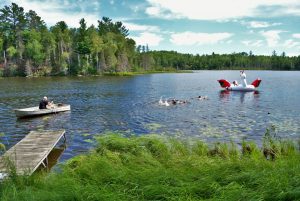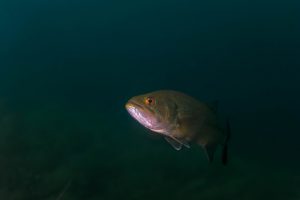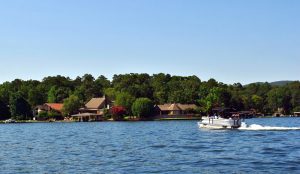When you think of Lake Erie, you probably think about its warm waters and excellent fishing spots.
But what do you know about the geography of Lake Erie and the number of fish species inhabiting it?
Lake Erie is the smallest – by surface area – warmest, and shallowest of North America’s Great Lakes. It is located on the border of Canada and the United States.
The lake also borders four US states – Ohio, Pennsylvania, Ontario, and Michigan. Lake Erie measures 9,910 miles with 900 miles of shoreline and provides many opportunities for commercial and recreational fishing activities.
As one of the largest freshwater commercial fisheries in the world, Lake Erie is a popular attraction for visitors – its fish population makes up approximately half of all fish occupying the Great Lakes.
The large population is due to the lake’s southernmost position, warm temperatures, and rich supply of plankton.
The lake is home to various indigenous and non-indigenous species of fish, and here are the fifteen most common ones you’ll find in Lake Erie.
Table of Contents
1. Walleye

Scientific Name
Sander vitreus
Origin and Taxonomy
The walleye is a member of perciform fish within the Sander genus. Walleye are native to the Northern United States and Canada and iare referred to as pickerel by Canadians.
Physical Description
The name “walleye” comes from their reflective, pearlescent eyes, which allow them to navigate and hunt through the water at night. Walleyes are the largest members of the perch family.
Walleyes are mainly olive or gold in color with white on the belly. They are long and thin with large mouths and sharp teeth. Female walleyes mature faster than males and tend to be bigger.
Habitat
Walleyes are freshwater fish and live in cooler waters, seeking out greater depths as they get older. Those living in shallow water tend to stay near vegetation to avoid light.
Food
These fish are nocturnal and usually feed at night in shallow water. Young ones feed on small crustaceans and insects and adults eat small fish.
Reproduction
Walleyes are polygynandrous, meaning males and females mate with multiple partners while breeding. They do not stay with their partners after mating. Walleyes spawn for a single day in the same location every spring.
They also don’t practice any kind of parental care. Offspring provide for themselves once they hatch.
Growth and Lifespan
Walleyes grow to bigger sizes under favorable conditions. The average size of an adult walleye is 31 inches in length and 29 pounds in weight.
They can live up to 15 years in healthy conditions. Males live longer than females.
Behavior
These species are particular about their environment. They change habitats depending on the time of the day, food availability, water temperature, and season. They stay deep in the water during the day and navigate towards shallow waters in the evening.
Socioeconomic Significance
Lake Erie is dubbed “The Walleye Capital of the World” because of the high number of Walleye inhabiting the lake. Biologists approximate that the population will hit 151 million in 2021. This high number attracts many fishers to Lake Erie every year.
Fishing Tip
The best time to fish for walleyes is during summer. They are highly available from June to September but scarce during spring because this is when they spawn.
2. Bluegill
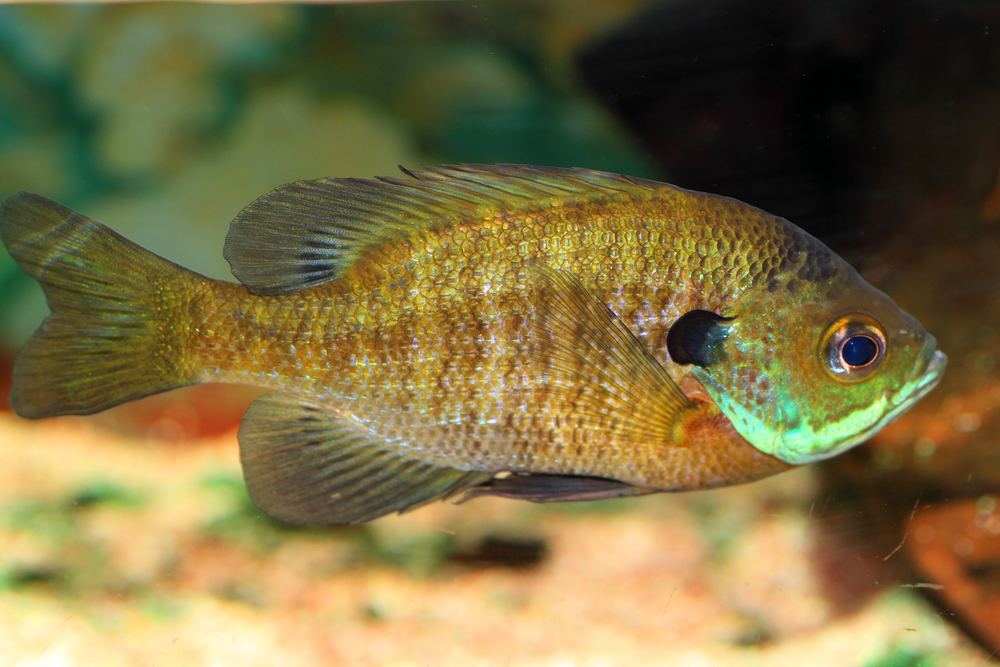
Scientific Name
Lepomis macrochirus
Origin and Taxonomy
Bluegills are abundant in Lake Erie. Just like Walleyes, the Bluegill is native to North America. They are freshwater fish and members of the sunfish family.
Physical Description
Bluegills have deep and compressed bodies that are bluish or greenish. They have a dark spot on their rear dorsal fin and a dark flap on the rear gill.
Habitat
Bluegills live in slow-moving streams, lagoons, rivers, and lakes and are common in North America. They live deep in the water. Although bluegills are freshwater fish, they can live in saline water.
Food
Bluegills are omnivores. They eat small animals, including aquatic insects and worms, small fish, and plants.
Reproduction
Like Walleyes, Bluegills are also polygynandrous. During reproduction, males make nests in colonies. Females visit and lay their eggs (nearly 50,000!) in multiple different nests.
Bluegills practice parental care, which includes fanning the eggs and guarding the nests against predators.
Growth and Lifespan
Adult Bluegills measure approximately 12 inches and weigh below 4.5 pounds. Bluegills can live up to 5 years, although most are often predated by humans, birds, and bigger fish.
Behavior
Bluegills are primarily active at dawn. They stay hidden in shallow waters during the day and the evening and move in schools.
Socioeconomic Significance
Although not common is spot fish, bluegills are common targets for commercial fisheries on Lake Erie.
Fishing Tip
When fishing for Bluegill, be wary of their pickiness. Select a suitable bait option – live bait works the best – and use a small hook to accommodate the small mouth of this species.
3. Yellow Perch
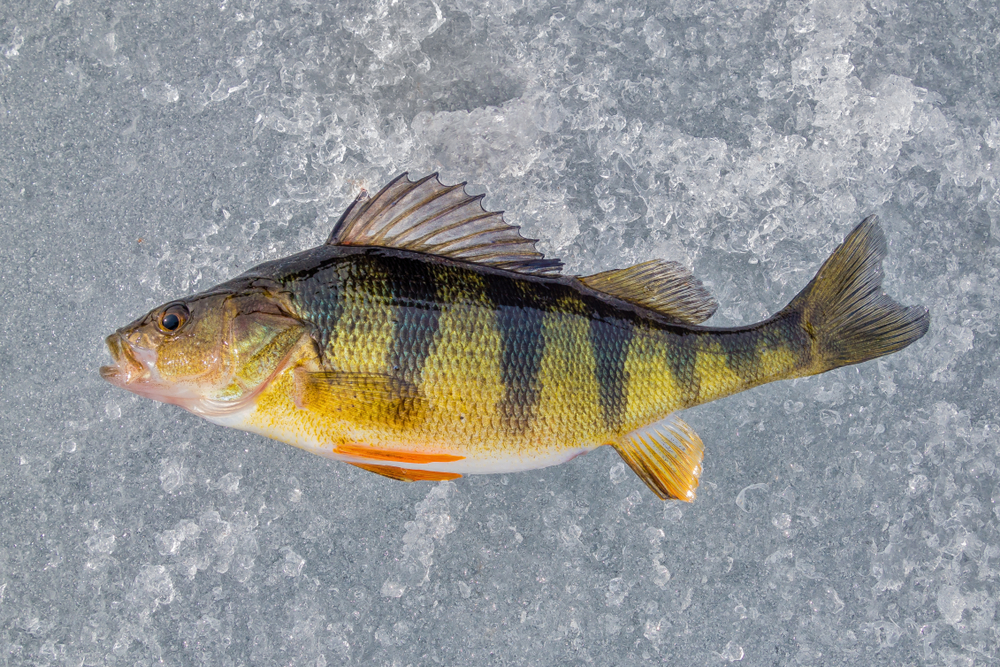
Scientific Name
Perca flavescens
Origin and Taxonomy
The third most common fish species in Lake Erie is yellow perch. It is a freshwater fish native to North America, a gamefish, and a member of the genus Perca and the family Percidae.
Physical Description
Yellow perch have a long and oval body and two dorsal fins. Adult yellow perch can measure up to 20 inches and weigh 4.5 pounds.
Adult yellow perch are golden-yellow on the sides with dark vertical bars on the side and a white belly. The color intensity will vary depending on age and environment. Young perch appear more whiteish.
Habitat
Yellow perch mainly live in lakes and large rivers. They tend to inhabit clear water and avoid darkness and silt. They generally live in moderate-temperature water.
Food
Yellow perch feed on zooplankton, small invertebrates, and fish. Young members of this species will eat benthos during the summer when zooplankton is scarce.
Reproduction
A young female perch can lay up to 23,000 eggs. No parental care is provided, and the offspring are left to fend for themselves once they hatch.
Growth and Lifespan
In many populations, yellow perch grow between 4 to 10 inches in length. The average weight of an adult yellow perch is 3.5 pounds. Yellow Perch can live up to 9 years in healthy environments.
Behavior
Young yellow perch tend to swim in schools while adults swim alone. Males and females swim in different schools.
Socioeconomic Significance
These fish are economically significant as a source of food and recreation. They support commercial fishery at Lake Erie. They also make the most delicious stew.
Fishing Tip
The chances are high that you will come across yellow perch when you visit the lake. They are easy to catch in the morning and if you use live bait to lure them in the evening.
4. Smallmouth Bass
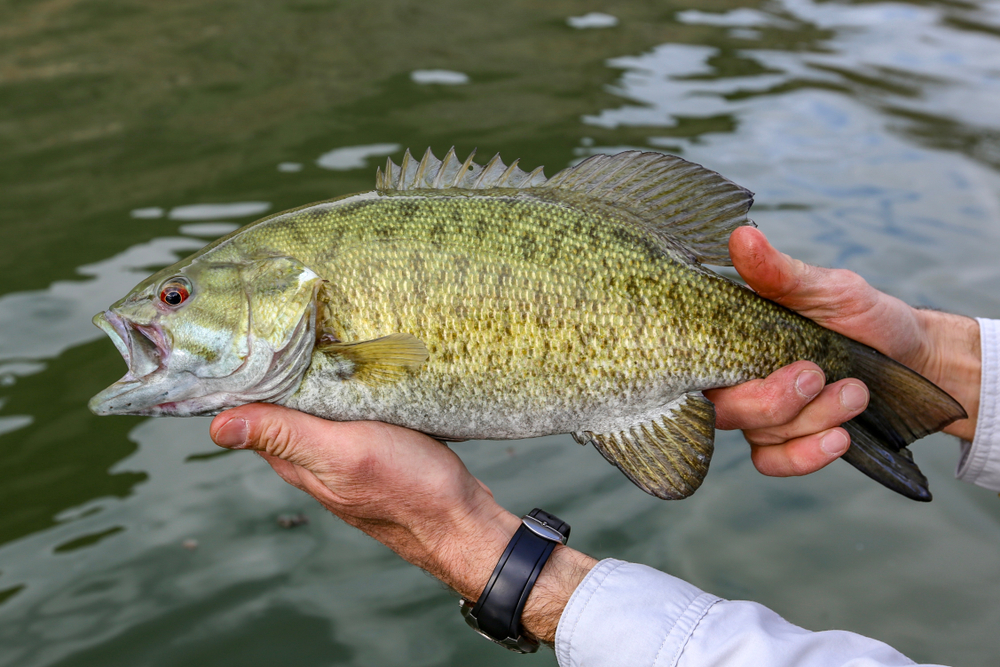
Scientific Name
Micropetus dolomieu
Origin and Taxonomy
Smallmouth bass are freshwater fish belonging to the sunfish family.
Physical Description
The name “smallmouth” bass is given to this fish because their mouths are smaller compared to largemouth bass – their upper jaw does not extend past the rear of the eye.
Smallmouth bass bodies are slender and muscular, making them excellent swimmers. Smallmouth bass body coloration varies, but they are typically green with vertical bars on their sides.
Habitat
This fish species inhabits clear water and is common in streams, rivers, and lakes. They prefer cooler temperatures.
Food
Smallmouth bass feed on different kinds of food. Young bass feed on insects, while adults feed on small fish, invertebrates, and plants.
They are predatory in their habitat but can be preyed upon by birds and larger fish.
Reproduction
These fish breed seasonally, with females laying nearly 2,000 eggs during the mating season. Parental care is conducted by males, which protect the nests and eggs.
Growth and Lifespan
The average size of an adult smallmouth bass is 16 inches and on average smallmouth bass live for six years.
Behavior
Smallmouth bass avoid cold waters at all times – they eat less and move sluggishly during cold seasons and are more active during warm or hot seasons.
Socioeconomic Significance
Smallmouth bass are popular game fish in the United States. They also support commercial fishing.
Fishing Tip
For fish lovers, smallmouth bass are a popular food fish in the Northern United States. While fishing, look for them in shallow, rocky waters. You can use worms and minnows as bait.
5. Largemouth Bass
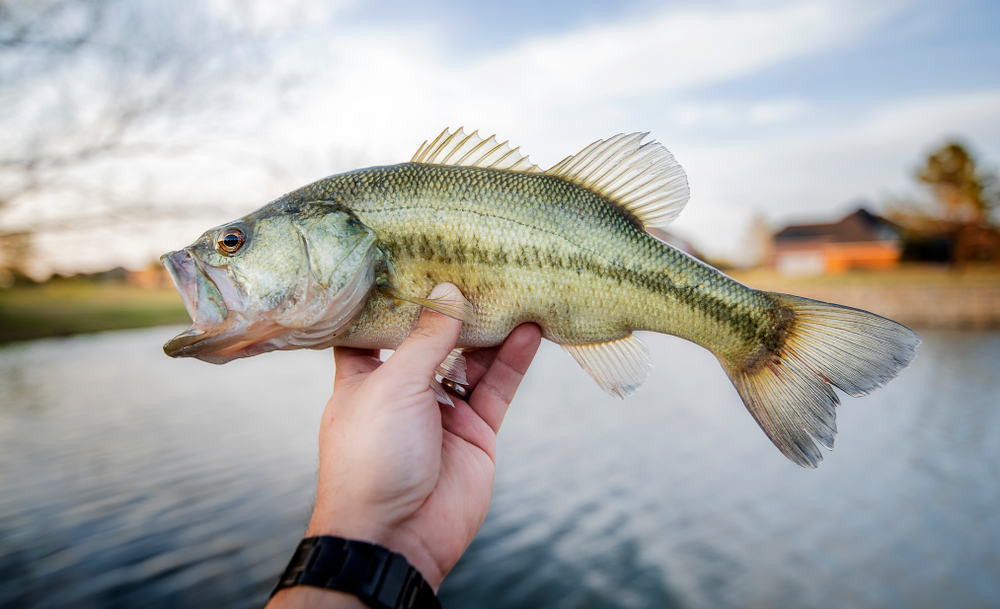
Scientific Name
Micropterus salmoides
Origin and Taxonomy
While not as popular as smallmouth bass, largemouth bass are a common sight in Lake Erie and are native to North America. The largemouth bass is a member of the black bass species.
Physical Description
A common feature differentiating this species from smallmouth bass is the elongated mouth extending beyond the eye’s rear.
Largemouth bass may vary in color, but they are typically greenish and have dark marks on the side and a white belly.
Habitat
Although lakes are the preferred habitat for largemouth bass, they can also be found in rivers and ponds. They prefer waters less than 20 feet deep.
Food
Young largemouth bass feed on insects, fleas, and other aquatic life. Adults feed on small fish, hatchlings, and worms. They sometimes cannibalize young black basses.
Reproduction
During breeding, females deposit eggs and leave and males provide parental care for their offspring. They guard the nests until the hatched offspring are ready to swim.
Growth and Lifespan
The largemouth is the largest member of the black basses. An adult can grow up to 27.5 inches in length and more than 22 pounds in weight. The growth rate is dependent on food supply and the environment.
Largemouth bass can live up to 5 years.
Behavior
These fish are challenging to catch because of their tendency to strike bait and fight back. They are also considered one of the most intelligent fish.
Socioeconomic Significance
Recreational fishing of largemouth bass is a multi-billion sport in the United States.
Fishing Tip
Suitable methods for fishing largemouth bass are trolling, drift fishing, and still fishing. Largemouth bass are available to fish in all seasons.
6. Steelhead
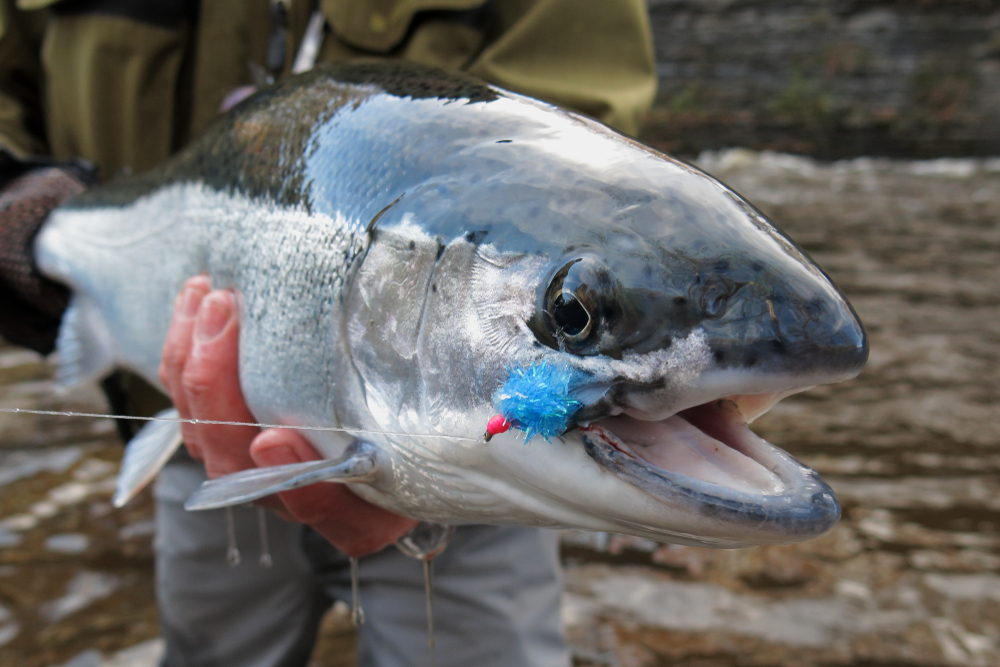
Scientific Name
Oncorhynchus mykiss
Origin and Taxonomy
Steelheads are native to North America and are a member of the Salmonidae family, of which salmon and trout are also members.
Physical Description
The name Steelhead is appropriate for the fish because they have a silvery body with a round head. Their bodies have black dots, and a horizontal red or pink stripe on the side is typical of most steelheads.
Habitat
Steelheads prefer fast-flowing and well-oxygenated gravel water to hatch in.
Food
The steelhead’s diet is comprised of baitfish and insects. They also feed on smaller fish.
Reproduction
These fish lay eggs in gravel-bottom waters, and a female Steelhead can lay approximately 9,000 eggs.
Unlike pacific salmon, steelheads do not die after spawning – they can spawn multiple times in freshwater bodies.
Growth and Lifespan
Adult steelheads measure up to 36 inches in length and nearly 20 pounds in weight. Their average life expectancy is five years.
They grow to more astounding sizes than their cousins, the rainbow trout, because they live in different ecosystems.
Behavior
Steelheads have an incredible life cycle. They are anadromous, meaning they spend most of their time at sea but migrate to freshwater to spawn.
Steelheads are commonly referred to as “trouts that behave like salmon.” Although these fish are the same species as rainbow trout, but they act more like salmon.
Socioeconomic Significance
Steelheads are famous for both sport and commercial fishing in Lake Erie. The Great Lake provides a great fishing experience for those looking to catch steelheads.
Fishing Tip
Steelheads are aggressive and hard to catch, making them very common in sport fishing. They require patience and persistence while fishing.
7. Coho Salmon
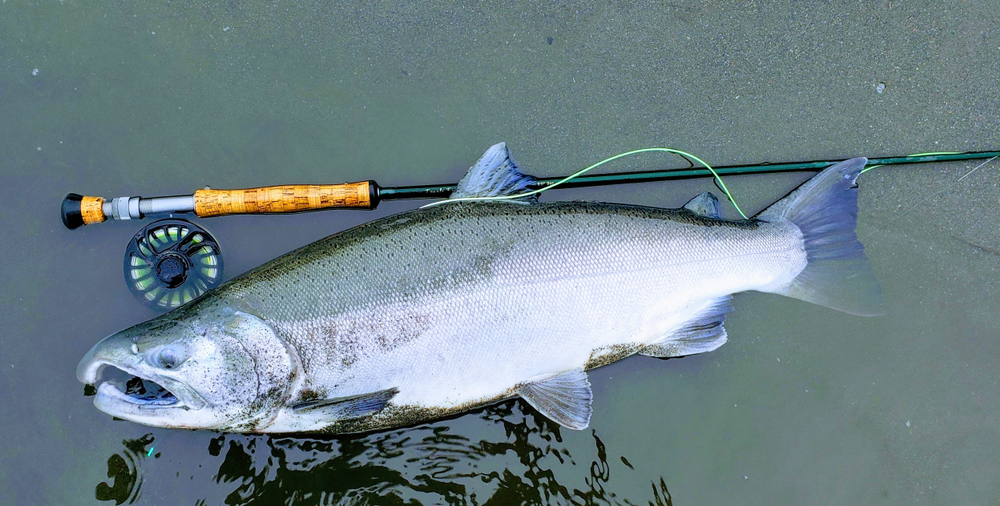
Scientific Name
Oncorhynchus kisutch
Origin and Taxonomy
Coho salmon are native to the Atlantic and Pacific oceans and belong to the family Salmonidae.
Physical Description
Coho Salmon are slivery in color and have small black spots on the dorsal fin, back, and tail. Salmon are physically different from steelheads and rainbow trout because they have black spots only covering the upper side of the tail while steelheads and rainbow trout have black spots covering the whole tail.
Mature salmon change coloration during the breeding season and male salmon develop hooked jaws as they grow older.
Habitat
Coho salmon partly live in saline water and freshwater.
Food
Salmon are carnivores and mainly eat insects, plankton, and fish. While at sea, they feed on tiny crustaceans. They are preyed on by larger fish and birds.
Reproduction
These fish lay eggs in shallow waters and the eggs hatch every spring. Salmon do not return to the ocean, as they die after spawning.
Growth and Lifespan
Salmon are large. Mature adult salmon can grow up to 36 inches in length and 36 pounds in weight. They live for more than five years.
Behavior
Just like steelheads, salmon are anadromous. They hatch in freshwater, mature in the ocean, and migrate back to freshwater to reproduce.
Socioeconomic Significance
Commercial salmon fishing fetches millions of dollars every year. Salmon is also famous for sport fishing.
Fishing Tip
Salmon fishing in Lake Erie takes place throughout the year as a sport and commercial activity.
However, they are best sought during the high season in early spring and late summer.
8. Lake Whitefish
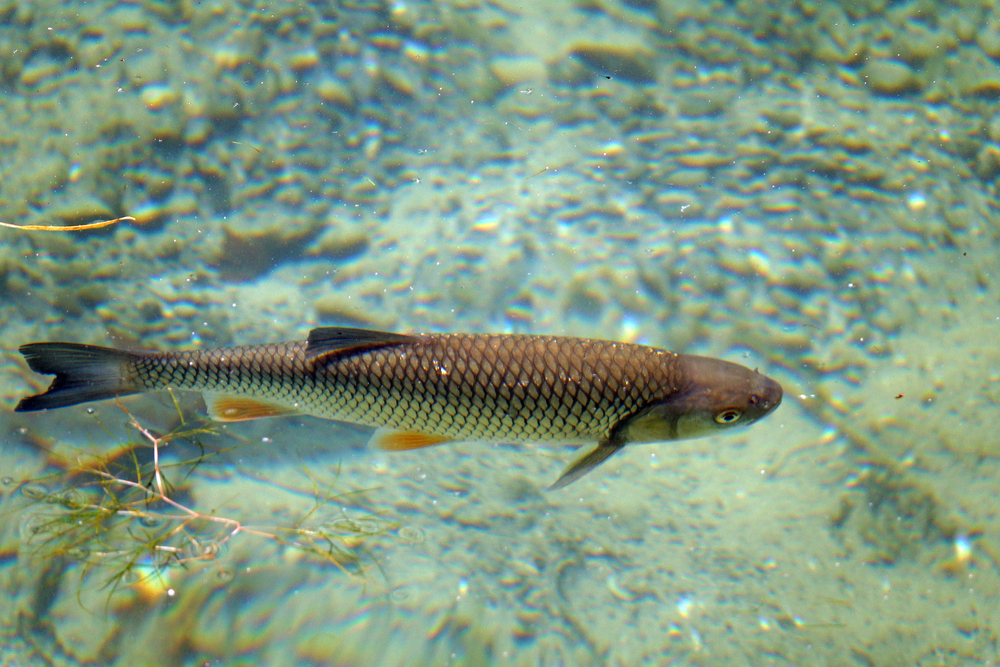
Scientific Name
Coregonus clupeaformis
Origin and Taxonomy
Lake whitefish is a freshwater fish native to the Northern United States. They are members of the Coregoninae subfamily.
Physical Description
Its small head earned it the nickname “humpback”.
The whitefish is silvery brown and dark on the back with a whitish underside. They have black fins, small mouths, weak teeth, and large scales.
Habitat
Whitefish are primarily found in large lakes like Lake Erie. This is because they prefer deep, cool water. They only move near the surface to feed.
Food
Young whitefish feed on small crustaceans, plankton, and larvae. Adults feed on small invertebrates and fish.
Reproduction
Whitefish spawn in the last quarter of the year and lay their eggs in shallow water in autumn. They do not provide any parental care to their offspring.
Growth and Lifespan
An average-sized adult whitefish measures 20 inches and weighs 3 pounds. They have a longer life span than other fish – many whitefish live an average of 20 years.
Behavior
Lake whitefish swim in schools. They are vulnerable to polluted environments and often navigate towards clean environments.
Socioeconomic Significance
Lake whitefish are an essential species for North American commercial fisheries. Whitefish from Lake Erie generate nearly 3 million dollars every year. They are fished for sports, especially by amateur anglers.
Fishing Tip
These fish are easy to catch because they usually swim in schools. Drift shifting and the use of spinners are the best methods for catching Whitefish.
9. Rainbow Smelt
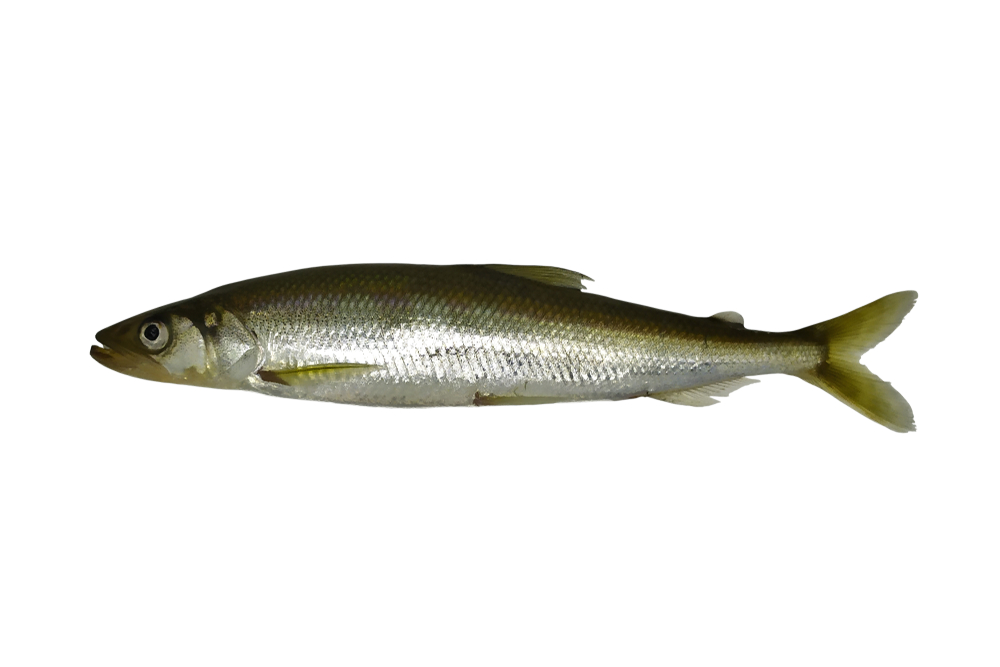
Scientific Name
Osmerus mordax
Origin and Taxonomy
Rainbow smelt are not native to North American lakes – they are a saltwater fish species. These fish were introduced to the Great lakes through deliberate stocking. They are predatory fish of the family Osmeridae.
Physical Description
Rainbow smelt are slippery with a green back and a white belly. They are slender, cylindrical, and have a silvery stripe running along the sides.
Their mouth is large, with an elongated lower jaw and teeth on the roof of the upper jaw. They have small scales that are easy to detach. Adipose fins are present in all rainbow smelt species.
Habitat
Young ones prefer shallow, warm water, while adults occupy deep, cool water.
Food
Smelt feed on plankton, small fish, and other aquatic life. They are a favorite prey fish for salmon, walleyes, and steelhead.
Reproduction
These fish spawn in the spring. Being anadromous, this species migrates to their native waters every year to spawn. Like salmon, they lay eggs in clear gravel waters.
Growth and Lifespan
Adult smelt can grow up to 23 cm long and weigh 85 g when fully grown.
Behavior
Smelt have an interesting life cycle. While some smelt can be anadromous, others live in freshwater only. They swim in schools and live in deep water.
Socioeconomic Significance
Smelt fishing is a popular commercial and sport activity in Lake Erie. Rainbow smelt earn Erie commercial fisheries millions of dollars every year.
Smelt are delicious, and their fillets are also processed as animal feed.
Fishing Tip
The best way to fish smelt involves using hoop nets and dip nets. Smelt dipping is suitable for catching them during spring while they are migrating to spawn.
10. White Perch
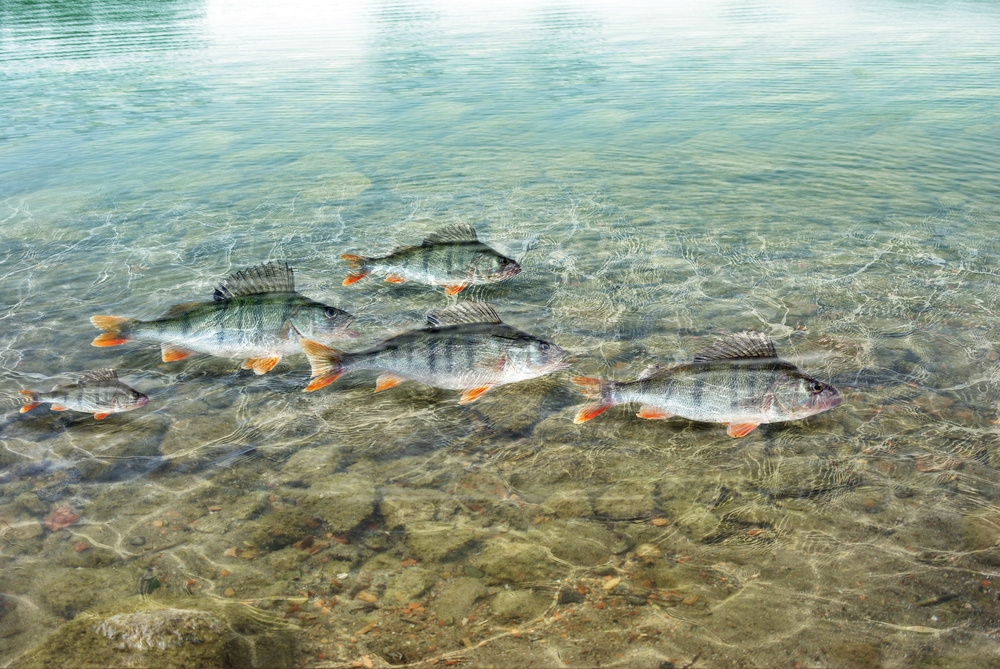
Scientific Name
Morone americana
Origin and Taxonomy
The white perch is a member of the Moronidae bass family. They are native to coastal regions, and white perch likely entered the Great Lakes through human stocking.
Physical Description
This fish is silvery-white in color, hence the name white perch. It should be noted that some refer to this fish as silver bass.
White perch lower jaws project outwards. The perch have separate dorsal fins and a strong anal fin supported by three spines.
Habitat
White perch live in a wide range of environments. They prefer freshwater for spawning; however, they are more common in brackish waters.
Food
White perch are carnivores. They heavily feed on worms, minnows, and smaller fish.
Reproduction
These fish spawn between April and June every year. Males mature at two years, while females mature a year later.
White perch are prolific breeders, with females laying between 50,000 and 150,000 eggs every mating season.
Growth and Lifespan:
The average size of a white perch is 12 inches and 1 pound. They can live for more than five years in suitable environments.
Behavior:
White perch lead an anadromous life. They live at sea but move to freshwater or low-salinity water during mating season.
Socioeconomic Significance
White perch are a common recreational species in Lake Erie. They are also fished commercially, although their numbers are not as high as walleyes.
Their high-yield white meat makes delicious stew and is mouthwatering when fried.
Fishing Tip
These fish are easy to catch using large nets because they swim in schools. However, you can also use live bait like worms and grasshoppers to catch white perch.
The best time to fish them is early in the morning when they are most active.
Bottom Line
Lake Erie is a suitable destination for any person looking to make an impressive catch. Its wide variety of species makes fishing an adventure for amateur and professional anglers alike.



